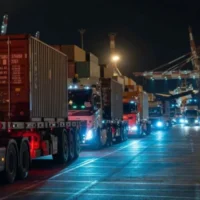(Brussels Morning Newspaper) – On January 26, 2025, cameras along the coast of Tenerife recorded a rare sighting of the Sea Devil, a deep-sea anglerfish usually found 200 to 2,000 meters underwater. Its appearance in shallower waters surprised scientists, prompting them to investigate possible environmental changes and shifts in marine ecosystems.
The strange behavior of the Sea Devil mirrors human migration. Just as sea creatures leave their familiar habitats, people are risking dangerous ocean voyages to reach Europe because of environmental changes, financial struggles, and political issues. These migration patterns reveal how nature and human movement are linked in our rapidly changing and diverse world.
Diversity
The Latin and late Latin meanings of diversity or ‘Diversitatem’ are disagreement, difference, shifting from the course, and dissent. And today more than ever, diversity is popular and omnipresent but more frequently used in politics and is almost wholly intertwined with the spheres of intersectionality.
The contemporary adjustments to conceptualization on a discursive scale made ‘diversity’ stunningly attractive to the public and different organizations due to the obtained positive meaning.
Giving birth to alienated groups, nations confront multifaceted problems represented at individual as well as organizational and institutional levels. The latter is important to critical management scholars for organizations and specifically universities to oversee the development of diversity in specific environments.
However, diversity too can fail if it is misapplied and carelessly applied by the officers and practitioners in the field. For example, the lack of capacity of practitioners to construct an adequate image using data is deadly as it further detaches diversity off equality and other terms and in addition, passes up the chance of maintaining proximity to institutional histories of struggle.
The above partially explains the popularity of diversity in European policy discourses but to properly cover the question of popularity one should return to the history of race and ‘others’ and its consequences.
Concretely in the 1950s-60 years, there were four declarations signed through the mediation of UNESCO that helped to renounce race as an analytical instrument in academia. Nonetheless, continental European scholars were inclined into the category of ‘racial skepticism’ which does not justify the existence of races.
Discourse and policy-framing
After the implementation of the Racial Equality Directive (RED) which was transposed into a national law of 15 member states in 2013 (MEMO/07/257 2007), there were cases of implementation seen. The later results were positive, for instance in addressing legal issues, but it was not enough in social and discourse dimensions.
Following the failure of political unification through the European Defense Community, it was decided to revive and popularize the discussion of culture and values for efficient management of shared resources soon fully embracing liberal democracy. This argument for the popularity of diversity in EU policies is one argument.
Left-leaning philosophy was integrated by Critical Race Theory into racial discourse and vice versa. Accordingly, it is plausible to conclude that attempts to address race through left-leaning discourses are essential in shaping 21st-century man’s current way of living.
Immigrant integration policy can be considered an ‘EU policy field’ simply because of the signed and introduced treaties, agreements, directives, and communications. Their origins, names, and wordings point to the overarching influence of immigrant integration in EU politics.
A few examples of the above-mentioned are the Lisbon Treaty, Communication on immigration integration and employment, Directive on the status of third-country nationals, Common Basic Principles for Immigrant Integration Policy, A Common Agenda on Integration, Zaragoza Declaration on Integration, Action Plan on the Integration of third-country nationals, and so forth.
French historian of ideas and philosopher Michel Foucault said:
By means of instrumentalizing texts as technologies and artificially shaping ‘self’, it is possible to gain control over the conduct of racialized bodies, including the government of the state as well.
Gradually, the justifications for racism have changed over time, and physical markers and cultural elements have also been developed, leading to the further racialization of particular populations and groups.
It is important to note that race is difficult to define since it subsequently becomes increasingly important in the emerging dichotomy of “Europeannes” vs. “Non-Europeannes.” These narratives demonstrate the instrumentalized potency of race discourses.
Post-war market focus
However, after WWII the circumstances are such developed that Europeans are bent out of shape and have no enthusiasm for dialectical distractions. Countries like France, Germany, the Netherlands, and Great Britain desperately need working power and low-skilled immigrants.
Subsequently, those countries revised their attitude and approach toward racial segregation and made a stride forward by signing agreements with formerly colonized and Eastern European countries to recruit unskilled workers and grant them the right to free movement.
Also, it is worth mentioning that white subjects had the right to free movement while ‘others’ possessed no such rights at all. Hence, only after WWII emerged economic and industrial necessities made it possible to substitute the racial discourses with immigrant integration policy, later becoming one of the dominant and vital fields of European politics.
The Europeanisation of immigrant integration is best explained initially in economics’ sense and more precisely by the concept of “growth” in economics. Simply put, economic growth and the logic of growth mean the accumulation and production of more and more every single year. If the working force of a nation produces better goods and services and makes contributions to the marketplace there will likely be ‘tools’ provided for workers to produce better and more.
Here tools mean capital that by its nature can be divided into three categories. First is physical capital, for example, machinery, different facilities, etc. The second refers to human capital, the main aspect of which is skilfulness, and the last is known as knowledge capital which can be modern technologies or high-skilled people/migrants. Thereby, this explains that the Europeanised immigration policy first was aimed at recruiting low-skilled workers and later started attracting high-skilled workers as IT specialists as of today.
How should migration and integration be dealt with?
Experts in the migration field like Els De Graauw and Floris Vermeulen have offered the framework to deal with integration-related issues. The framework implies the existence of a few factors satisfaction of which are necessary to maintain the robustness of the inductive framework.
First off, the cities should have a left-leaning government.
Secondly, the migrants and their descendants must amount to a considerable sum of the population to form a strong electorate, and they must be fairly represented in municipal and decision-making structures.
Lastly, cities are bound to have the infrastructure for cohesive community-based processes thus effectively representing immigrants’ shared interests.
After meeting these requirements cities are capable of commitment to policies that carry forward immigrant integration even despite possible negative national context. In the case of a group-based approach, when immigrants or their offspring become government officials, they can better articulate the needs of immigrants and help advocacy groups in addressing policy issues.
According to researchers, distinction in group-based resources even in the same city can lead to misunderstanding and miscommunication among different group-based organizations. When these types of organizations are in cohabitation it positively affects the development of the city integration policies.
The Los Angeles testimonial would be a suitable case where its organizations are well organized and cooperate to improve city life and its policies hereby benefiting immigrant communities.
Later, to overcome the discrimination the member states had to take into consideration the RED7 and adapt certain sets of laws to their national legal code to eradicate racism.
However, it was not so easy to achieve wider success because the transposition process was faced with apprehension by some countries. Policy changes could never come true because of the veto points resulting from polarization in member states.
Nevertheless, Direct and Indirect discrimination based on ethnic origin became subject to the definition in Article 2 of the Council Directive brought about the implementation of the principle of equal treatment irrespective of persons’ origin.
Subsequently, when RED and equality bodies could not demonstrate the full potential of maintaining the principle of equality something different was employed, namely combating racism through policy and funding programs (EU anti-racism action plan 2020-2025).
The EU also incentivizes the encouragement of enragement countries to challenge discrimination but even today we are witnesses of structural racism in the West.
To contribute to the attempts to eradicate discrimination and racism one should never ignore intersectionality despite it being initially geographically related to the US experience it found its feet all over the globe underscoring the importance of gender and sexuality in modern times.
This is conditioned by the very reason that in the past Dutch East Indies were exporting white males to Java to encourage concubinage and only after a long time giving permission to white women to visit colonialized territories and serve the interests of the colonizer.
We eventually might deduce that all the above are byproducts of the following as Marx and Engels put it:
“the exploration of new territories via imperialism and the drastic growth and popularity of world trade making possible for the bourgeois class to benefit largely and European society to fall into two monolithic classes, concomitantly capitalism controlling all the means of production.”
Dear reader,
Opinions expressed in the op-ed section are solely those of the individual author and do not represent the official stance of our newspaper. We believe in providing a platform for a wide range of voices and perspectives, even those that may challenge or differ from our own. We remain committed to providing our readers with high-quality, fair, and balanced journalism. Thank you for your continued support.



